What’s the climate like in the near-future of Watchdogs Legion?
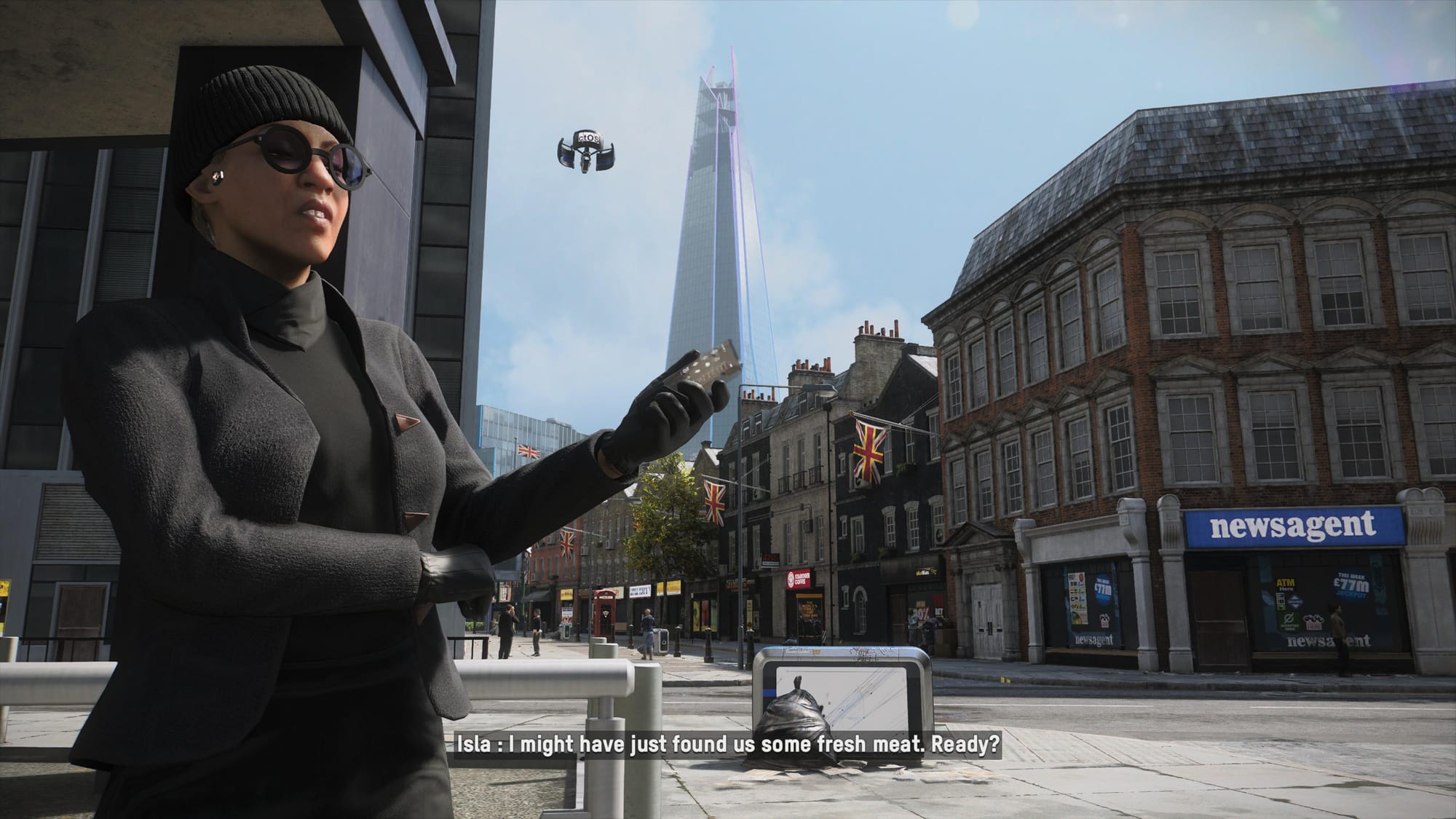
I’ve been playing the 2020 game Watchdogs Legion this past fortnight, which has been on my list since it came out. It’s set in London in the late 2020s or early 2030s – right around the time frame when the sustainability transition needs to be fully underway if we are to have any real chance of arresting the accelerating warming of the planet. Thankfully, there’s some evidence that things are a bit further along than they are today in 2024 but sadly there’s not that much, and it doesn’t seem to be a major factor in the plot (at least, not directly).
Anyone who has played Watchdogs Legion will recognise that the game is not primarily about climate change or even Green Tech. Its focus is on political authoritarianism, state capture and repression, and the dangerous use of technology. At its core, it’s also a flawed, but deeply worthwhile attempt at depicting a democratic, grassroots resistance movement responding to those conditions. It doesn’t quite succeed, for reasons Austin Walker so well articulated when it first came out, particularly missing the sense of the collective aspect of collective action. But what about its depiction of the deep infrastructural changes that are involved in the green transition? What lessons can we take from it?
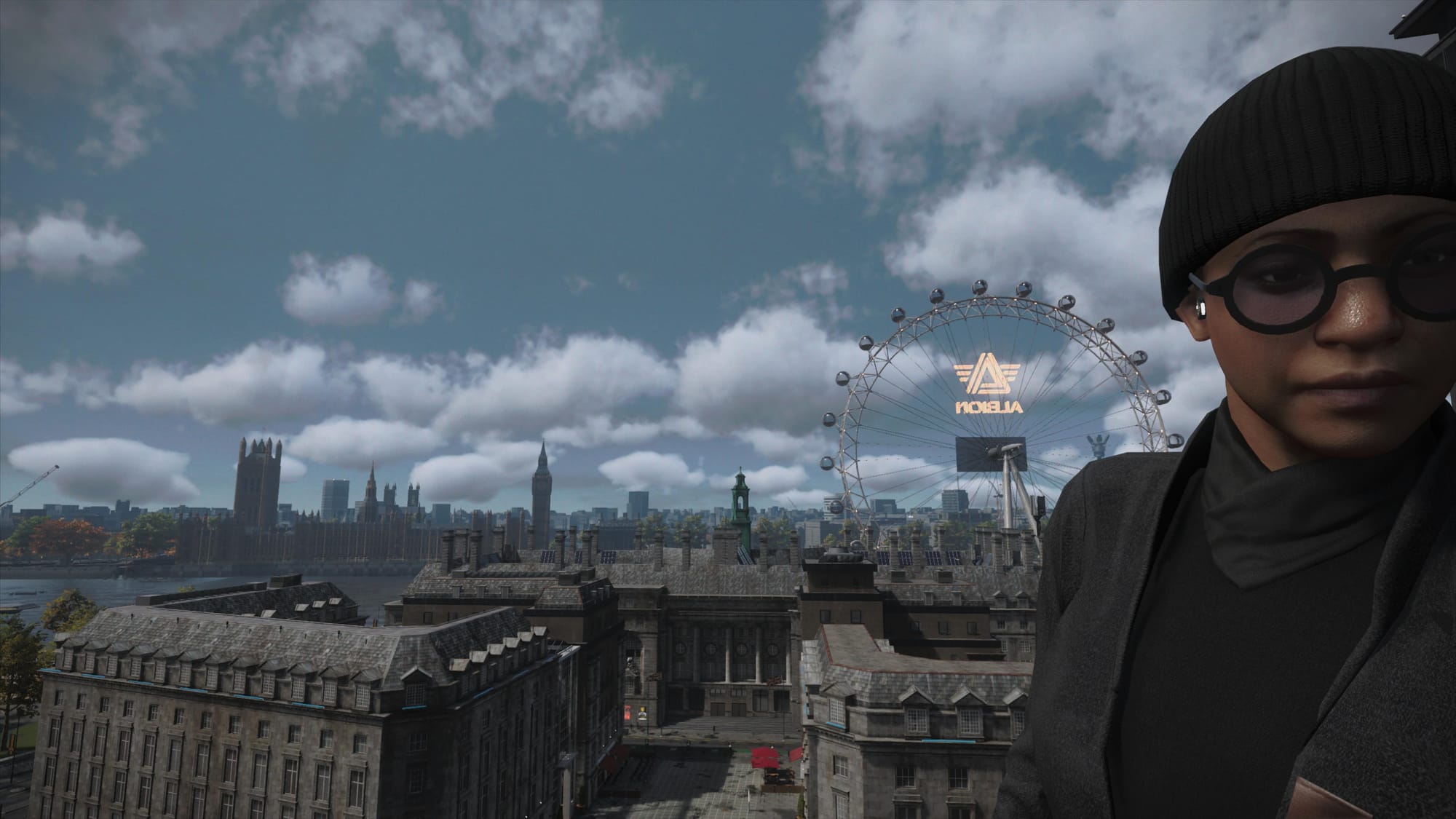
To answer that, firstly, we’re going to grade the solar installations on the rooftops of virtual London. Some of them are good! Some are not so good, and almost certainly were a wasted investment for whoever paid for the system. But does it convey the sense of an energy system in transition? We shall see.
Secondly, we’re going to take a little tour of the other kinds of Green Tech in Watchdogs Legion, and what they convey about our “near future” – from electric vehicles and chargers, to street-level e-waste and organics recycling. Neat.
Here’s our first solar system.
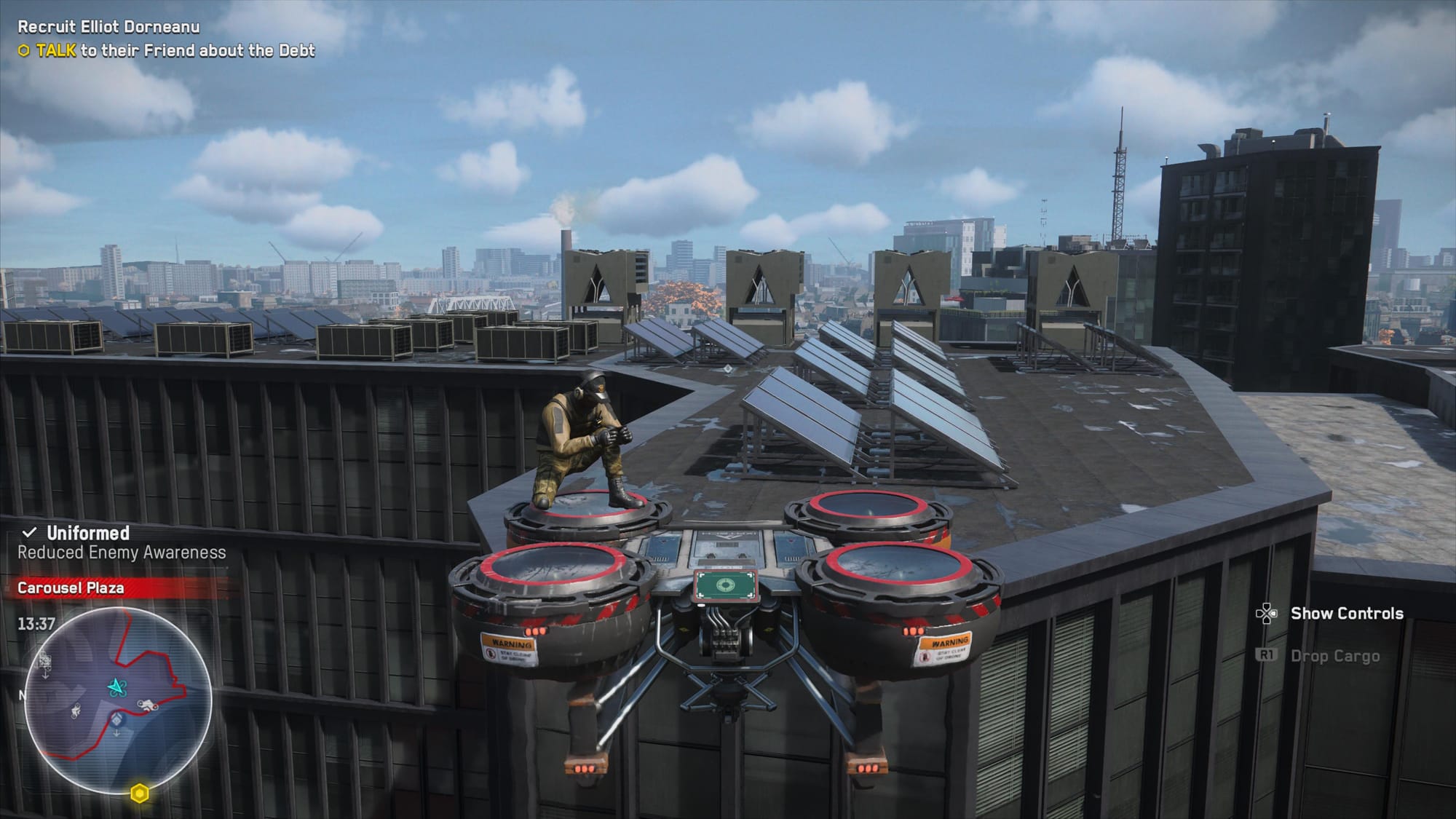
This one’s pretty good! Panels are facing south, ensuring they will have solid production when the sun is low in winter, and the angle of tilt on the panels seems appropriate for London’s latitude. According to one solar installer, 35º is about optimal. These are a bit aggressive, maybe more like 45º but hey, what’s 10 degrees between friends. The bigger issue is the spacing between the front and back rows of panels, which are going to shade the back panels and tank the overall production of power when they do. There’s plenty of space on this roof! Spread those panels out and you’ll make sure you’re getting full production. You can already see a bit of shading on the bottom of the panels here, even when the sun’s fairly high.
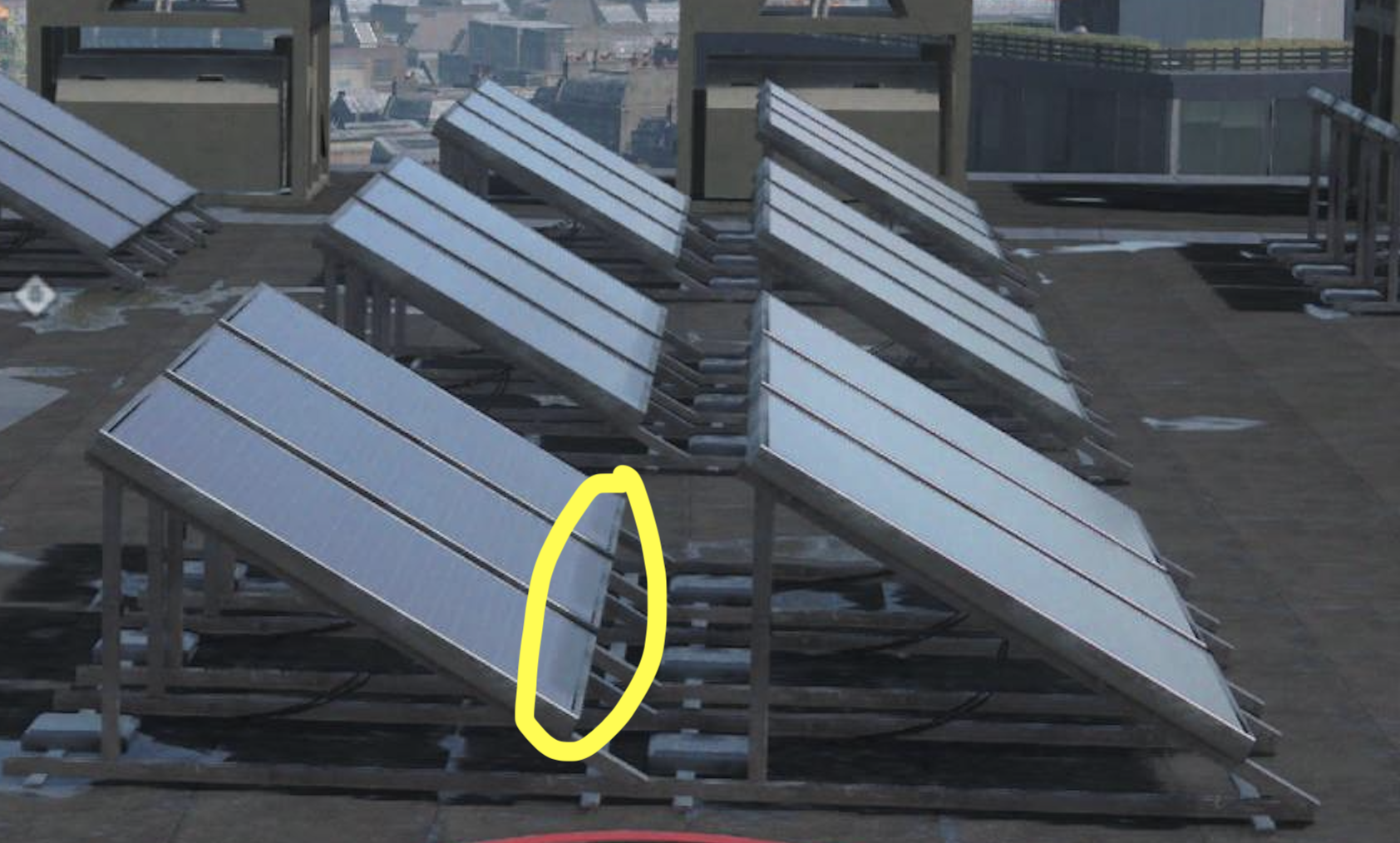
This entire system was quite poorly designed, and this is easily preventable. Overall rating: B–.
Our next installation is truly baffling. The angle on the tilt for these panels is closer to 70%! I seriously doubt this system actually produces anything more than a trickle of power, and if I were the building owner who bought it, I would be demanding my money back.

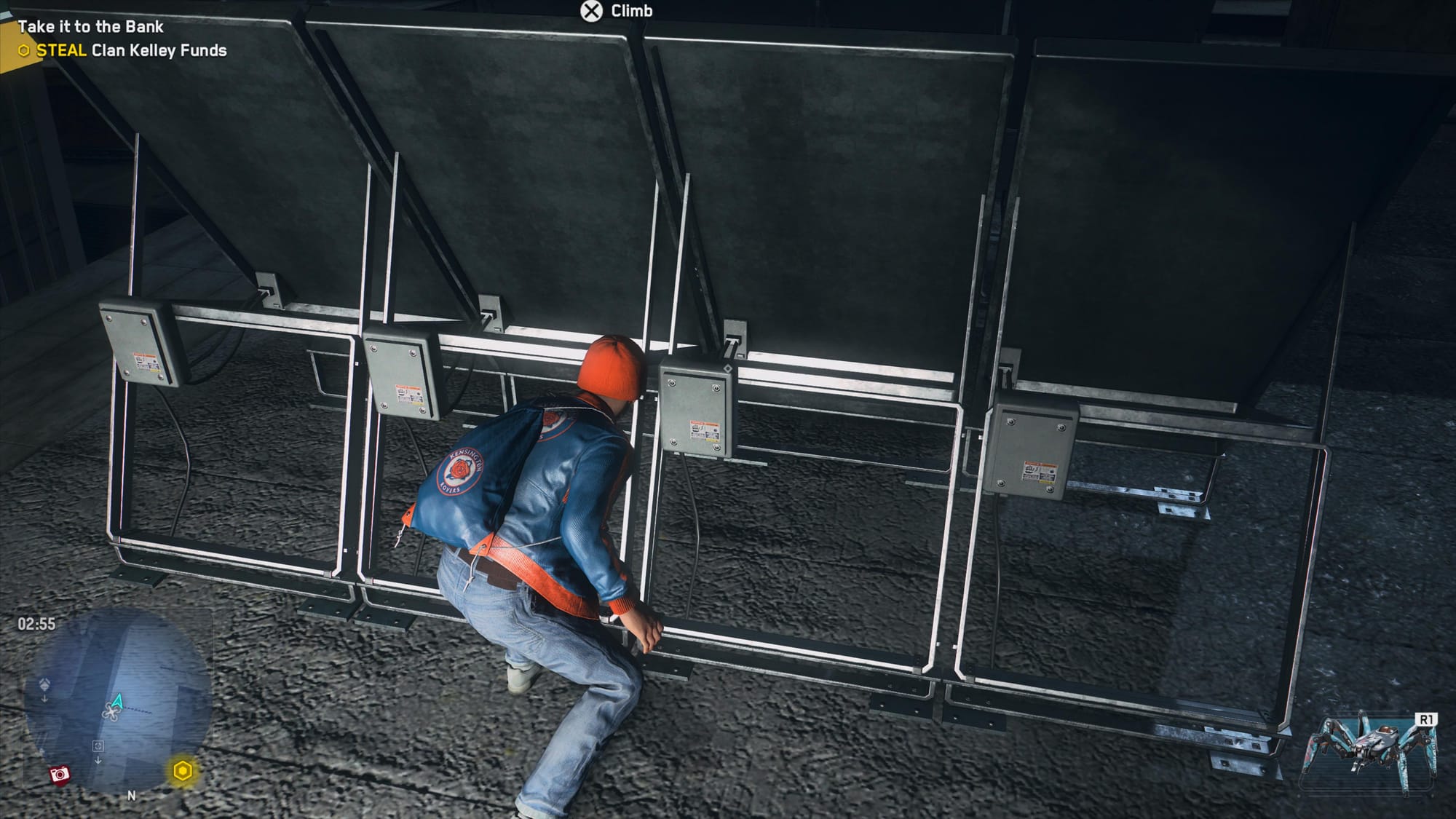
On the plus side, the cabling job on the back is quite neat, and those individual boxes might be micro-inverters – which would allow each panel to optimise their output independently of the others, minimising the impact of shading issues across the whole array. But that’s more for the occasional stray shadow from a TV aerial, there’s no way micro-inverters are fixing shading issues this bad – and on top of that the additional equipment will be making your solar system even more costly by having a dozen or so micro-inverters, instead of just one nice robust Fronius Primo with a 10-year warranty. Nice try though. Overall rating: D–
Here’s the next installation, as viewed from the top of a cargo drone.
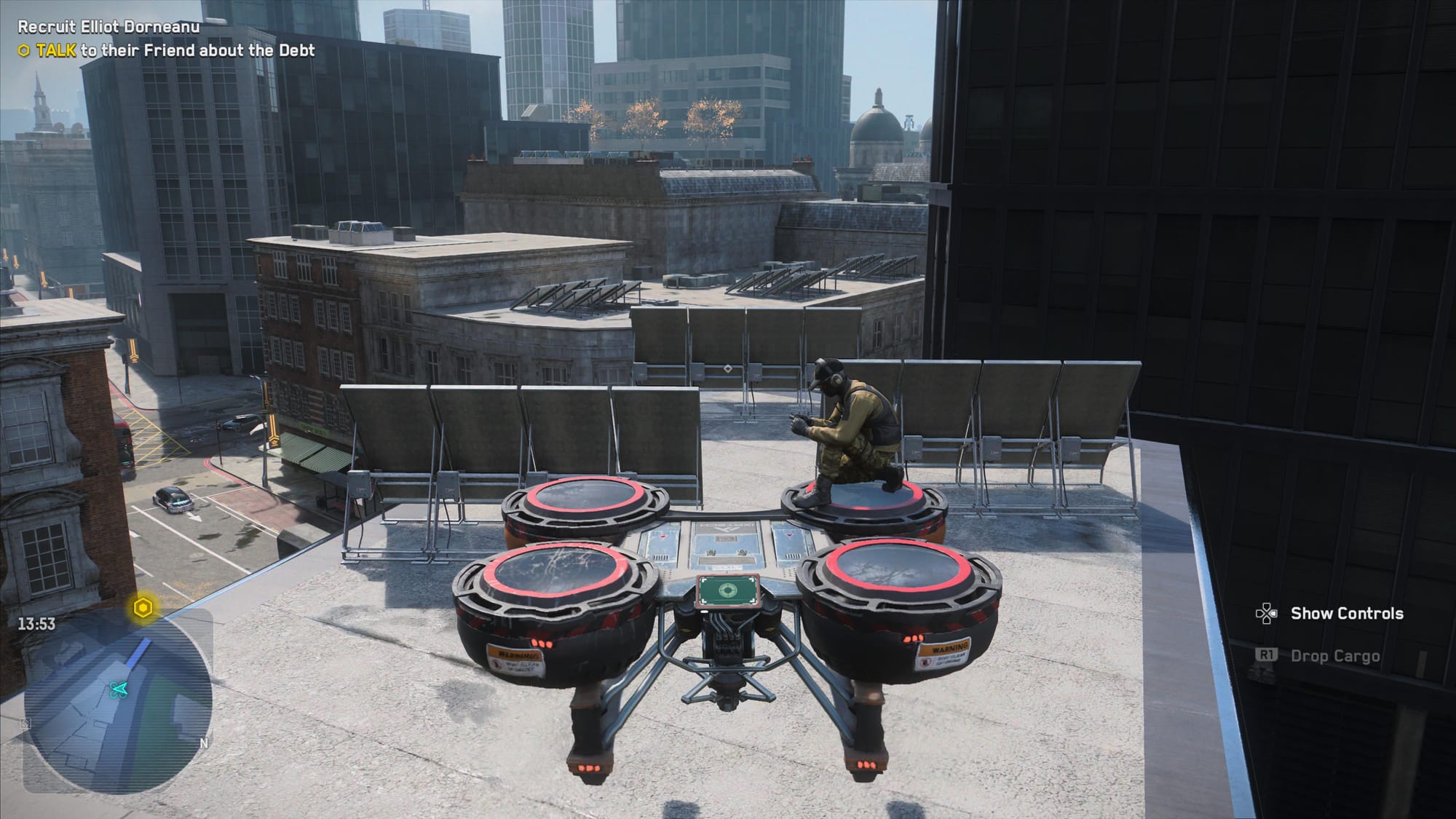
This is decent – again not an optimal use of roof space, you could fit a lot more panels on if you ditched the tilt trays. There are only 12 panels there – let’s say the average panel is 400 Watts by 2030 (a generous assumption!), you’re still only making an absolute maximum of 4.8 kW, and your typical output for most of the day will probably be half that or less. You can use 2kW of power by running a dishwasher and tumble dryer simultaneously – forget about charging your EV off this system, there’s not enough juice.
The other thing that’s curious about this install is that it’s facing slightly south-west. This is not necessarily a mistake though, an important consideration in any solar system is when you plan to use your power. It’s increasingly common to see solar panels on houses installed facing east and west to optimise generation in the morning and evening when it’s most useful. During the middle of the day, most people are out at work and not making use of the free sunshine power (unless you’re WFH or have a house battery that charges during the day). Also, in places like Australia the grid is increasingly flooded with excess solar during the day which is becoming harder and harder to make use of. Maybe that’s what this system was intended to address. A 12-panel array pointing South-West for the evening peak is not the worst idea. Overall rating: B+

The next system is this one which is helpfully shaded by this giant skyscraper to the direct south. Whoever sold them this system could sell ice to Eskimos, or the owner of the building was a fool. These panels aren’t doing anything outside of the highest summer. You do hear people complaining about the heat in the game though – maybe London summers have gotten hotter already? Overall rating: D– (and only because I’m impressed by the fleecing done the salesperson!)
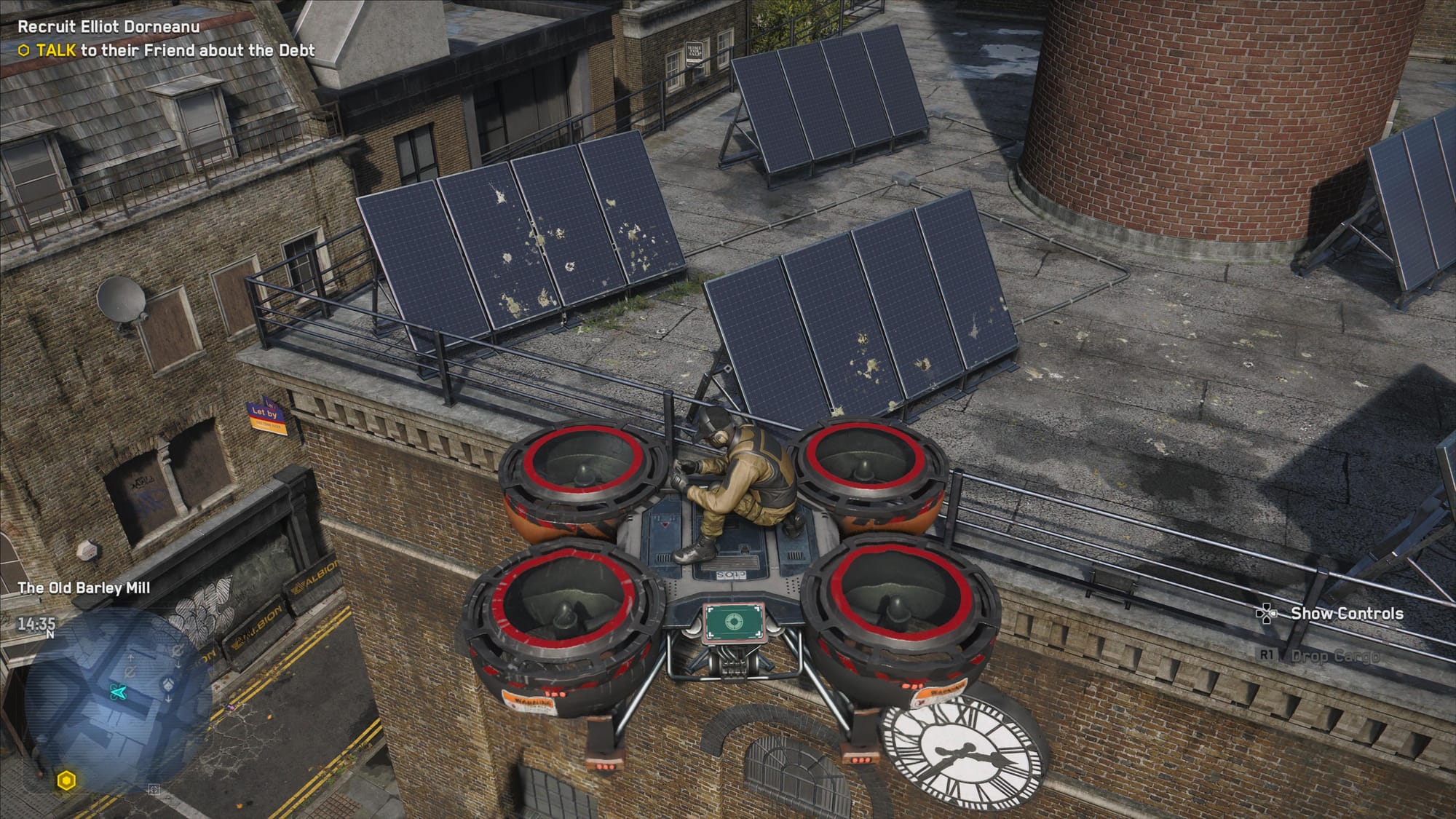
Now this one’s interesting – it’s got a few issues, again, poor optimisation of space, not enough panels, again with the super high-tilt that only really makes sense if you care solely about winter production. But the main issue is that the panels are dirty as hell. They’re covered in bird shit! Nothing tanks solar production like shading, and if you're blocking photons with bird poop you're not getting full power. Giving panels a regular wash is essential for optimal production. In a city with this many drones, you’d think there would be a panel-cleaning drone but I haven't seen one. Every other panel in the city is spotless after all. Overall rating: C.
OK, this is the last of our solar evaluations – here’s a system on the roof of a very tall hospital. It’s a very narrow skyscraper, meaning the floor-space-to-roof space ratio is all out of whack for a meaningful solar setup. There’s almost no point to this one, and it’s also maybe the worst setup I’ve seen in the entire game? This looks like a well-intentioned but ultimately misplaced attempt to put solar on a public building. Like someone wrote a policy for rooftop solar on every public office without taking into account that not every building is right for it. A shame, and likely a waste of money.
Some buildings just aren’t made for solar – or the roofs aren’t anyway. If we ever get those transparent glass solar panels that generate power a dang window, it might be a different story. But I haven’t seen any recent developments on that front, not since about 2020? There seems to be at least one company selling them though.
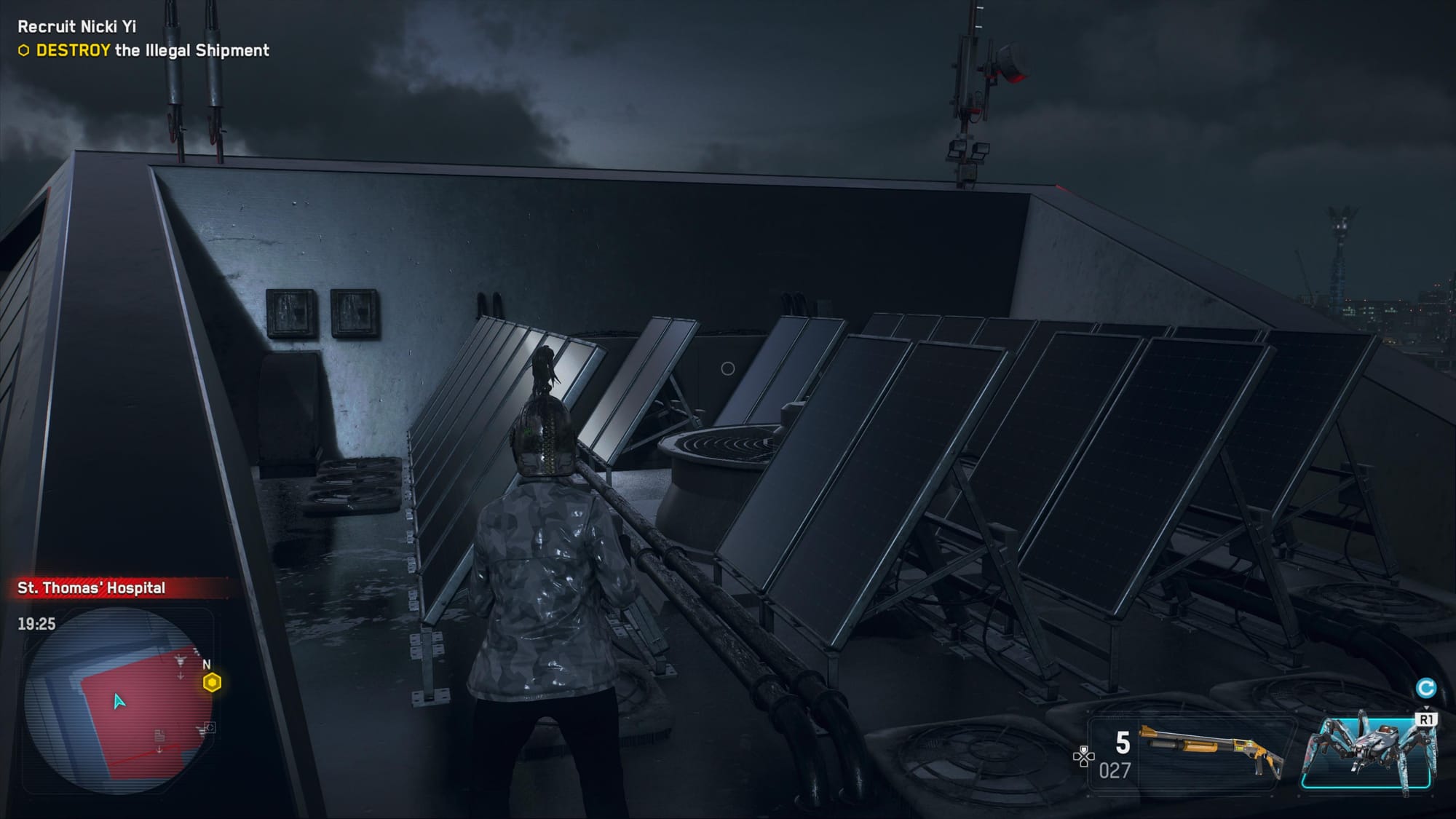
Not only are the panels behind the first row going to be shaded by the same aggressively angled tilt trays, but the gradient of the roof on the left is going to smash production in the far corner. Those furthest panels at the back are barely going to see the sun at all, and that’s going to tank production. They have tried to cram in as many panels as possible at least, but as a consequence, they’ve wrecked the whole system. The only time I’d imagine these panels will be producing any power at all will be when the sun is directly overhead – and even then because of the aggressive tilt you’re not going to be capturing the most energy. About 9 months of the year this system is hardly going to be producing any power at all, I suspect.
Overall rating: F.
Taken as a whole, then solar in Watchdogs Legion’s London is a mix of the adequate and the downright baffling. There’s no need for tilt panels – you still get perfectly adequate production off a flat roof, even at high latitudes like in the UK, and you avoid those oh-so-preventable shading issues.
Maybe the more important question though is are there as many solar panels as there should be? Have we maximised the rooftop production across the city? You look at this image and tell tell me what you think.

Cmon folks, it’s a climate emergency! There’s so much room for more panels on so many buildings. The government has not been doing enough to encourage the uptake of solar, perhaps it is time for some policy adjustments, or maybe some small subsidies to kickstart the market? Once the authoritarian military contractor in charge is kicked out anyway.
Close inspection of the panels across the city shows that they are almost uniformly the mono-crystalline type of panel – given the single colour of the individual cells.
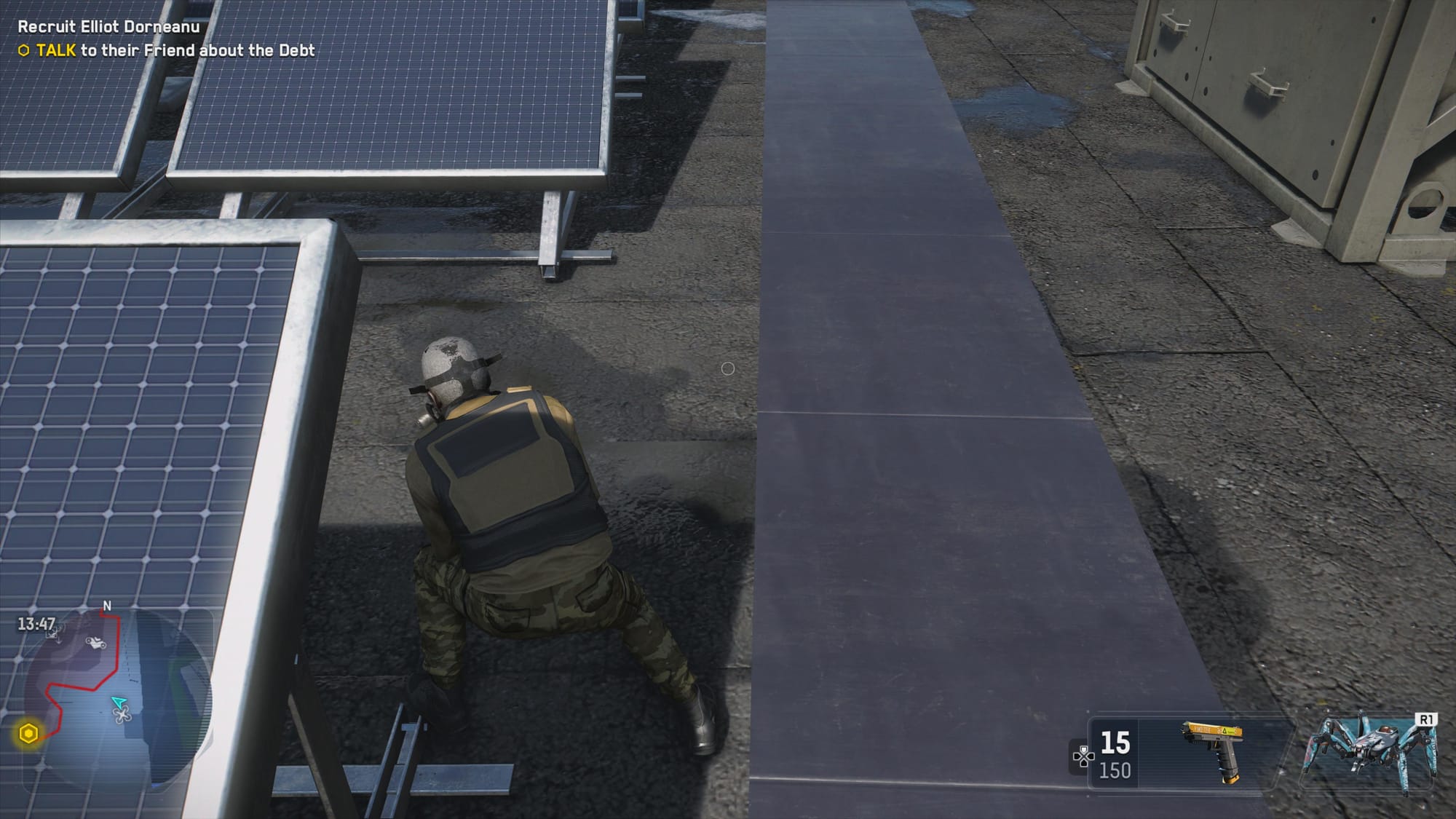
I’ve looked all over this Future London and haven’t spotted a single multi/polycrystalline silicone panel. This is simply a different type of manufacturing technique and can be important for aesthetics more than efficiency, you can get good panels of both – but the uniformity suggests everyone in London might have sourced their panels from the same place. Is this a post-tariff future where cheap Chinese polycrystalline panels are locked out of the UK market??? Is that why there's so few of them? I hope not, but who can say! The future is a mystery.
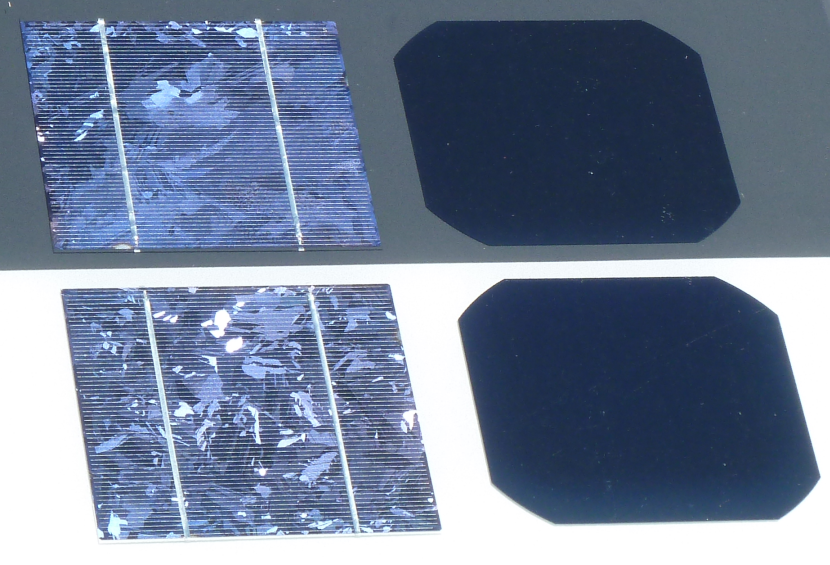
Okay, that’s enough about solar - what other future Green Tech do we see in the game? Well, the other main thing is Electric Vehicles. It’s a bit hard to know exactly which cars are electric – and plenty still aren’t electric which is (sadly) quite realistic for 2030. You still get plenty of old-fashioned engine noise in most.
Like real-world EVs, though, the electric vehicles often sport some rather futuristic shapes and lights – here’s (I think?) an electric truck.

Which has a front that reminds me of the Hyundai Ioniq electric line. Light bars are so hot right now.

Here’s another EV (I’m pretty sure) and it's an all-glass futuristic lounger car with both front and rear-facing seating arrangement.
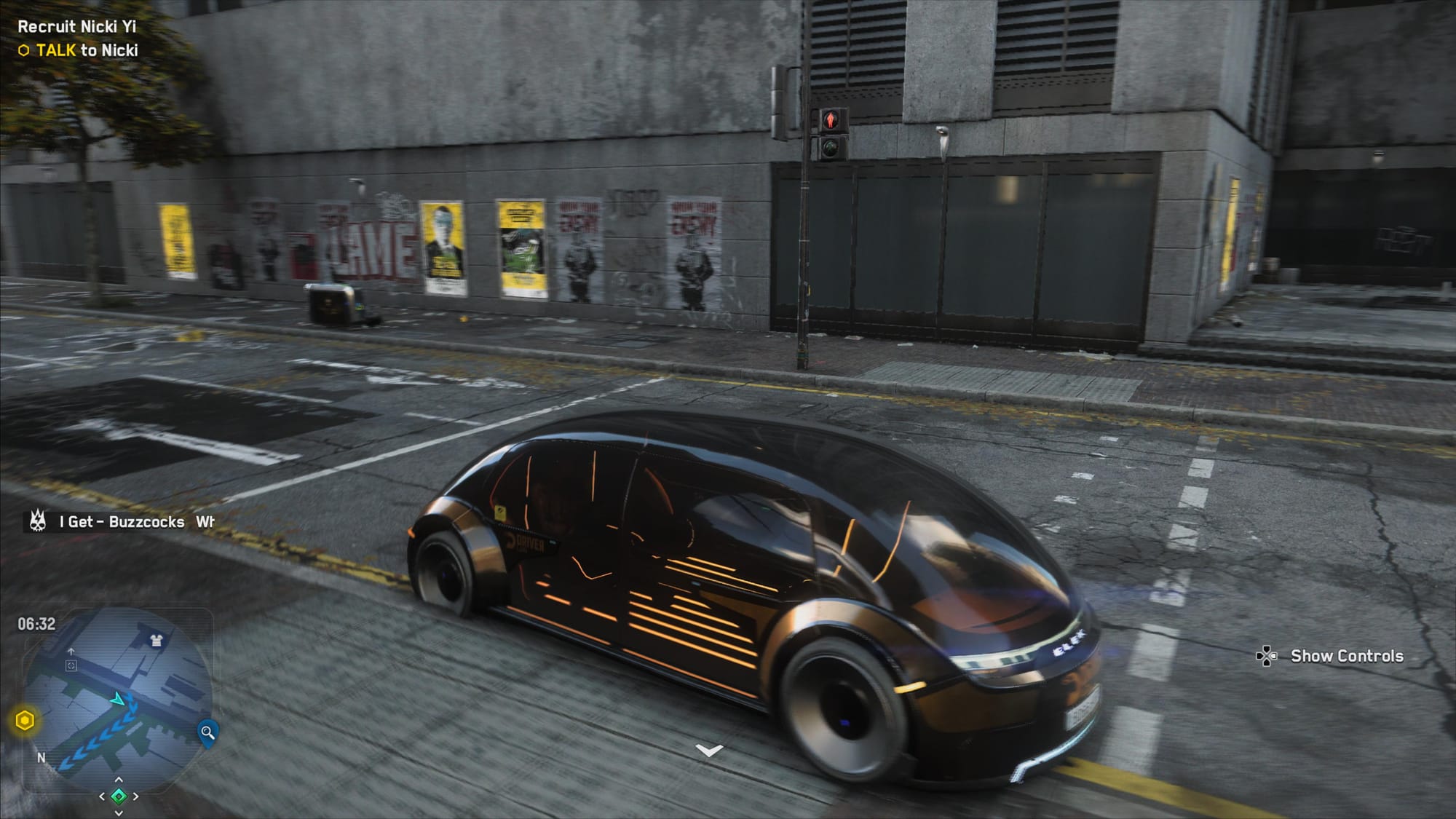
Its overall shape looks like the self-driving Audi that Will Smith drove in iRobot, just bit more luxurious and Apple-y, slightly less sporty vibes.
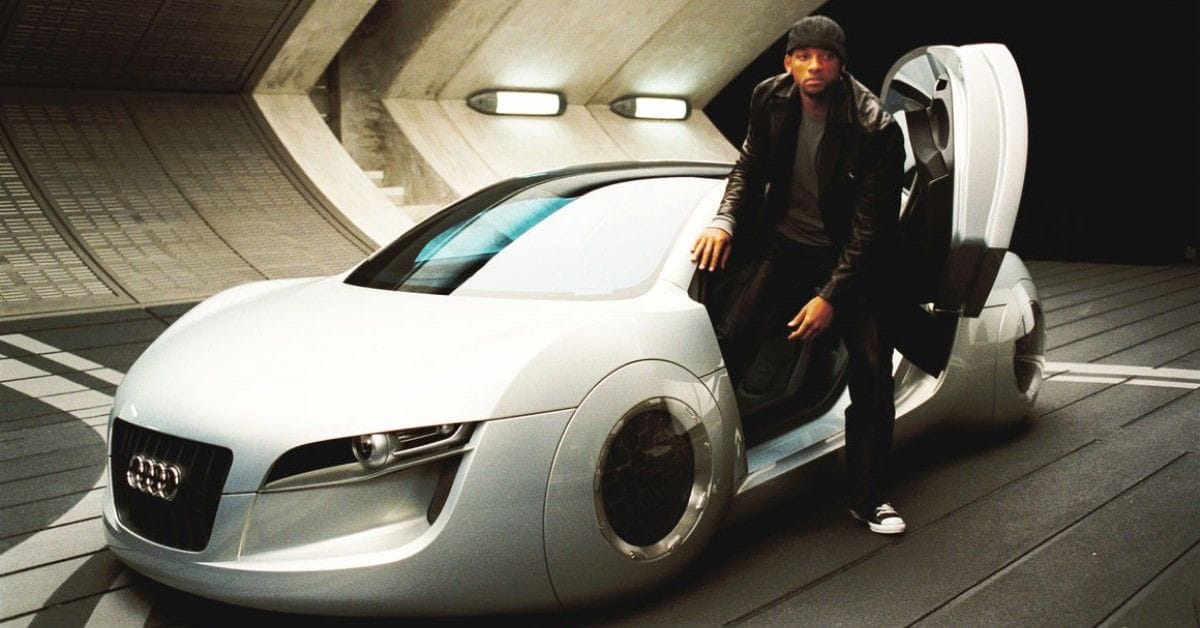
A growing EV fleet needs a growing number of EV chargers – and some of the more affluent suburbs get them on the street. Nice to see the buildout proceeding. This whole street was lined with EV chargers.
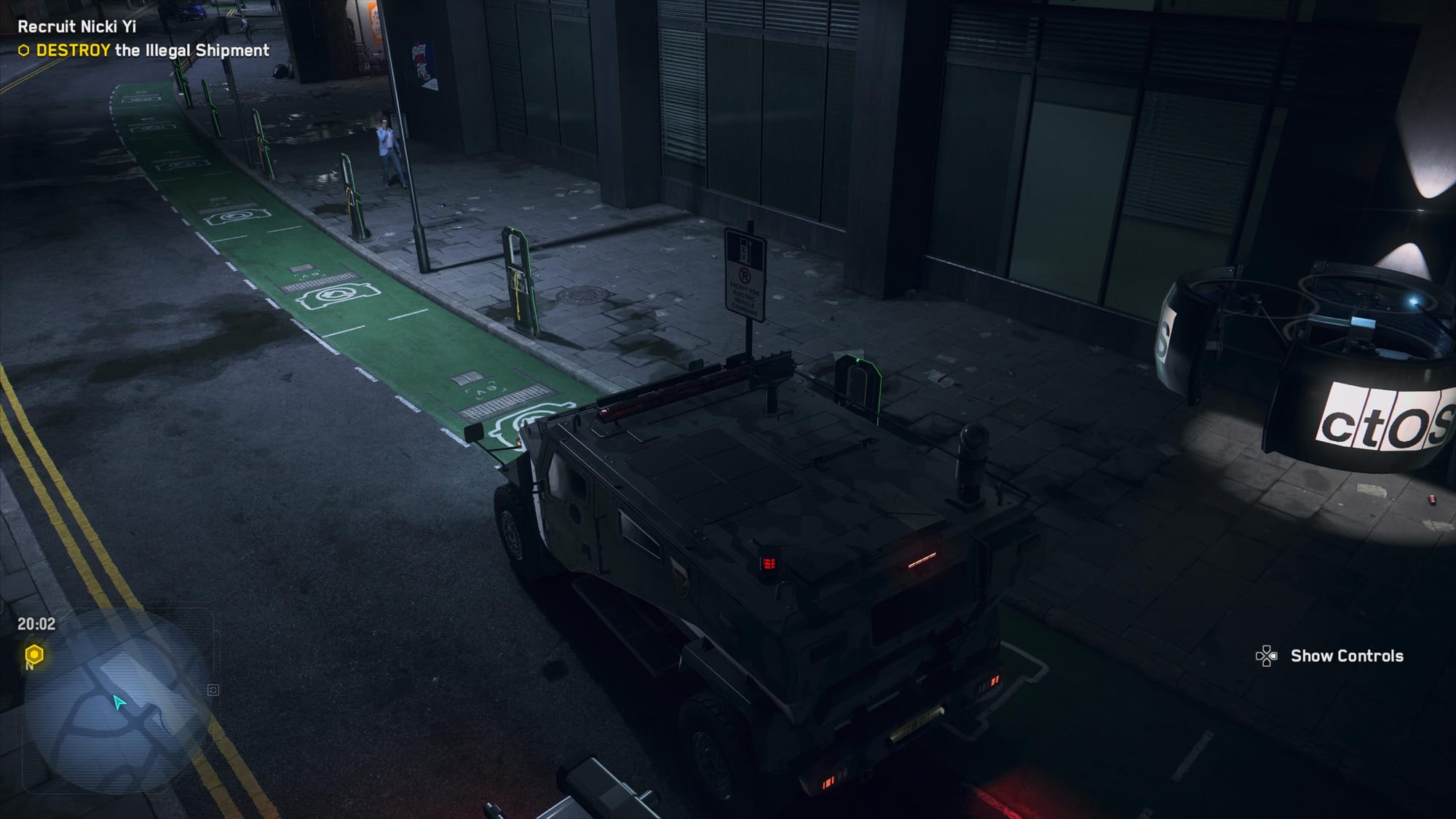
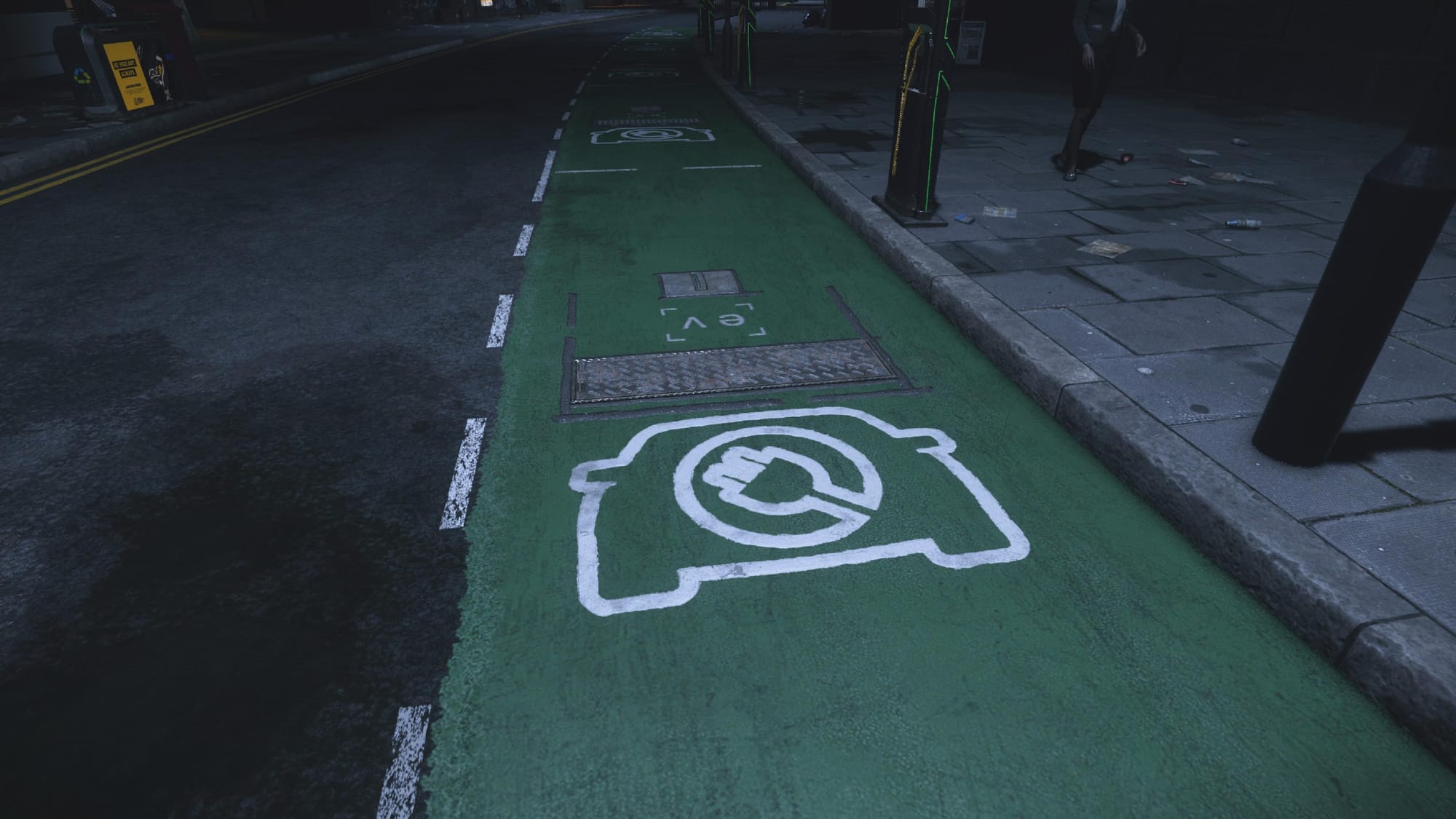
At first, I thought these might have been wireless charging spots – which is a cool idea, but not very practical, and looking next to each spot there is a charger with a plug. That wire cord looks a bit thin though for rapid charging. I don’t think you’re getting supercharger-style power through a cable that thin without melting it.
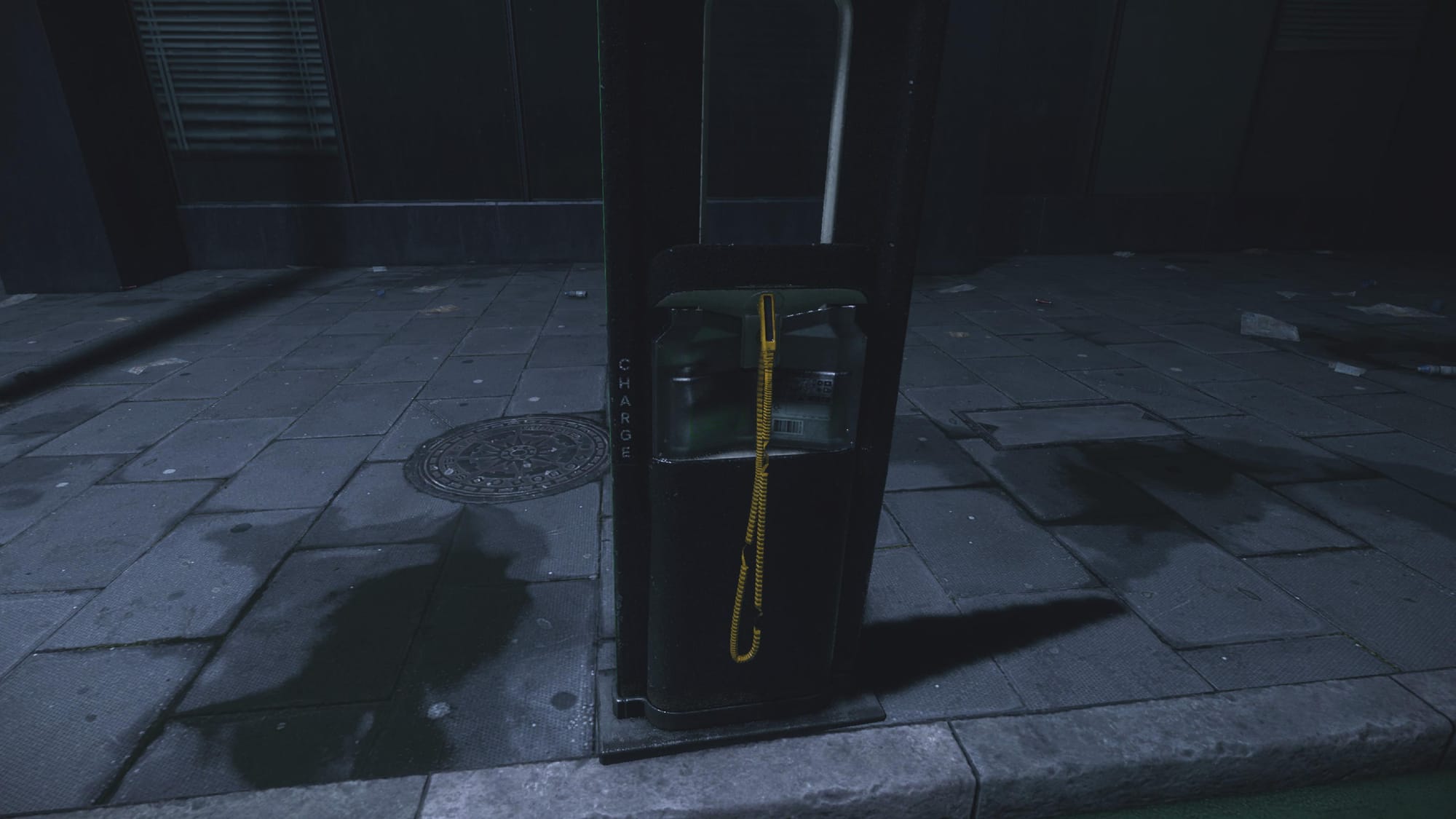
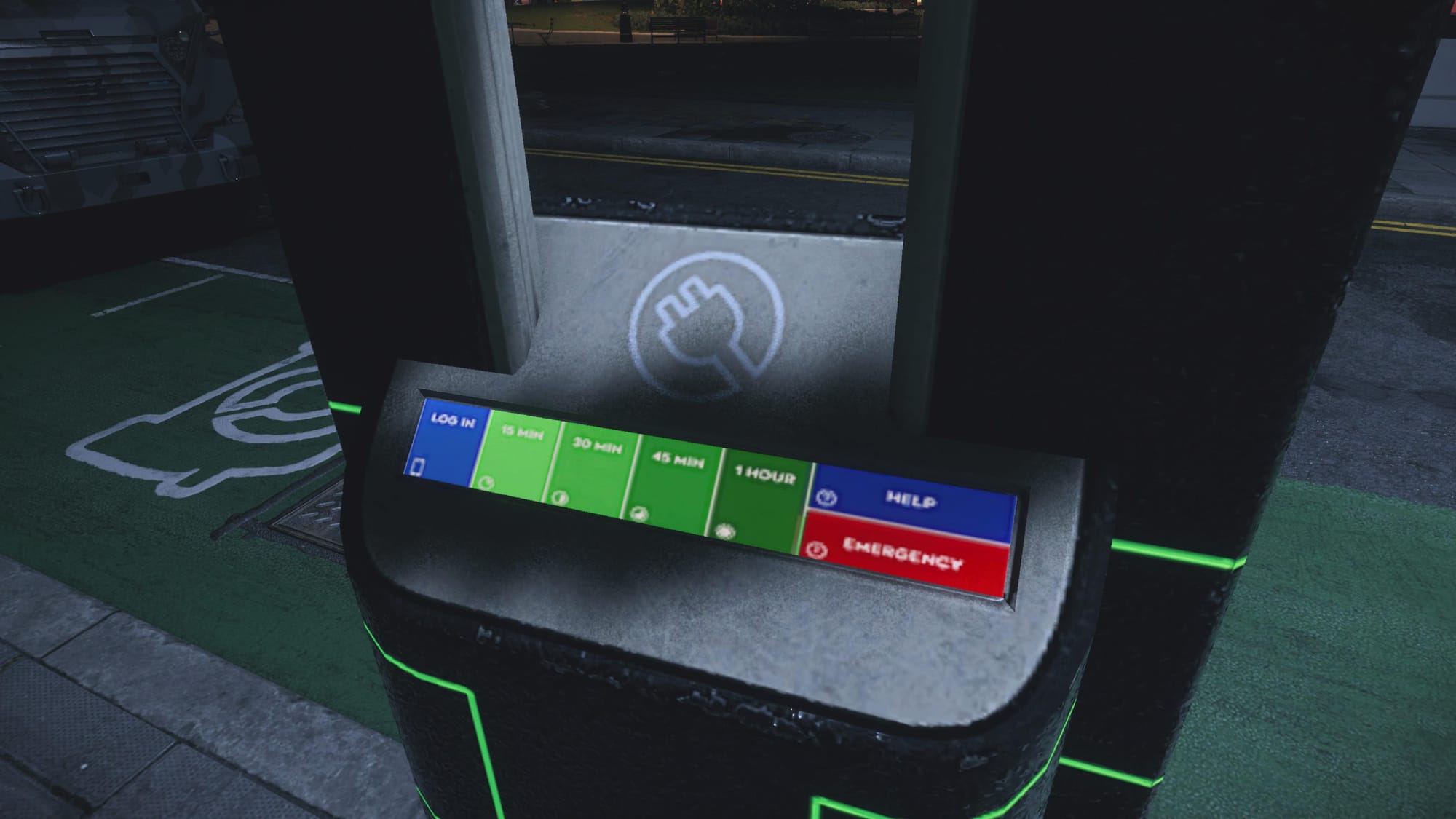
Looks like you pay for the time period of charging rather than by kWh of power? That will make accounting a bit difficult if you're using a work vehicle, as it's a bit non-standard, but if you’re charging it with only a trickle of power at most, maybe that makes sense?
They also limit parking in these charger spots to EVs, though I wonder how feasible this is politically when an entire street moves over to EV charging spots, yet not everyone is driving an EV yet. Oh well, this is a rich suburb, I'm sure they've complained to council already.

You know what’s better for the planet than electric private vehicle transport though (and that goes for drones you can fly around on)? A robust electric public transit network, that’s what. The London Underground works great still and gets you around town, but the trains above ground never seem to go anywhere. Curious.

The classic red double-decker buses are still there too but I don’t think you can ride on them? You may be able to drive them though. Are they all electric? I’m also not sure - but it seems plausible. They certainly look futuristic and new, like they've been replaced recently. London's already begun phasing out the current "Boris Buses" in favour of electrics. Neat.

Lastly, there’s street street-level bins for ewaste! Is that… good? Or does that mean that we’re still addicted to upgrading and throwing away devices? I suspect the latter. A return-and-earn collection scheme is a great idea though. It works with plastic bottles and cans, why not eewaste?
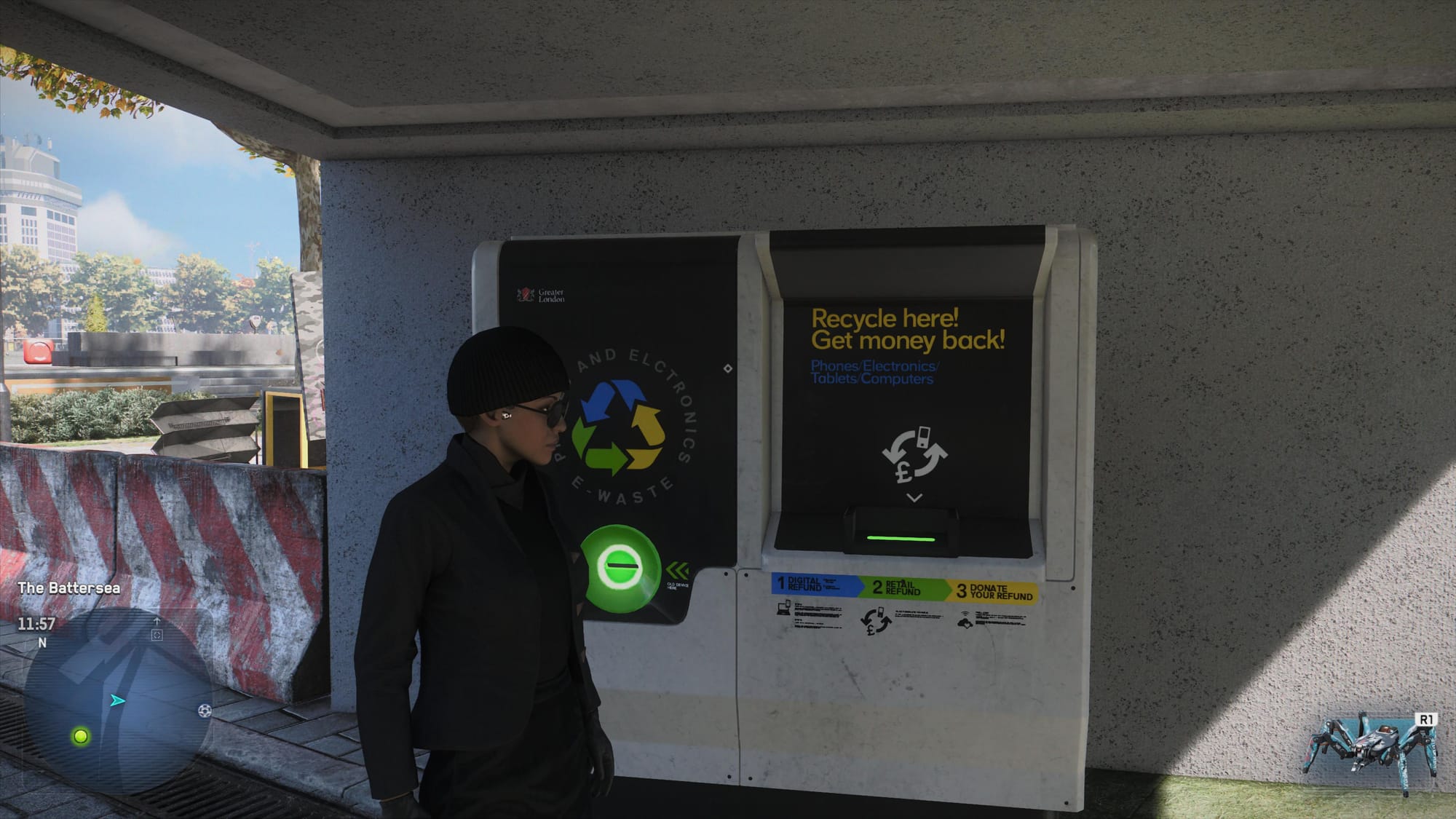
And last but not least, here’s a green organics street bin. This is great! I love an organics bin. Diverting food and living matter from landfills and turning it into usable compost instead avoids having it breakdown anaerobically in landfill, and turning into potent methane. Gross.
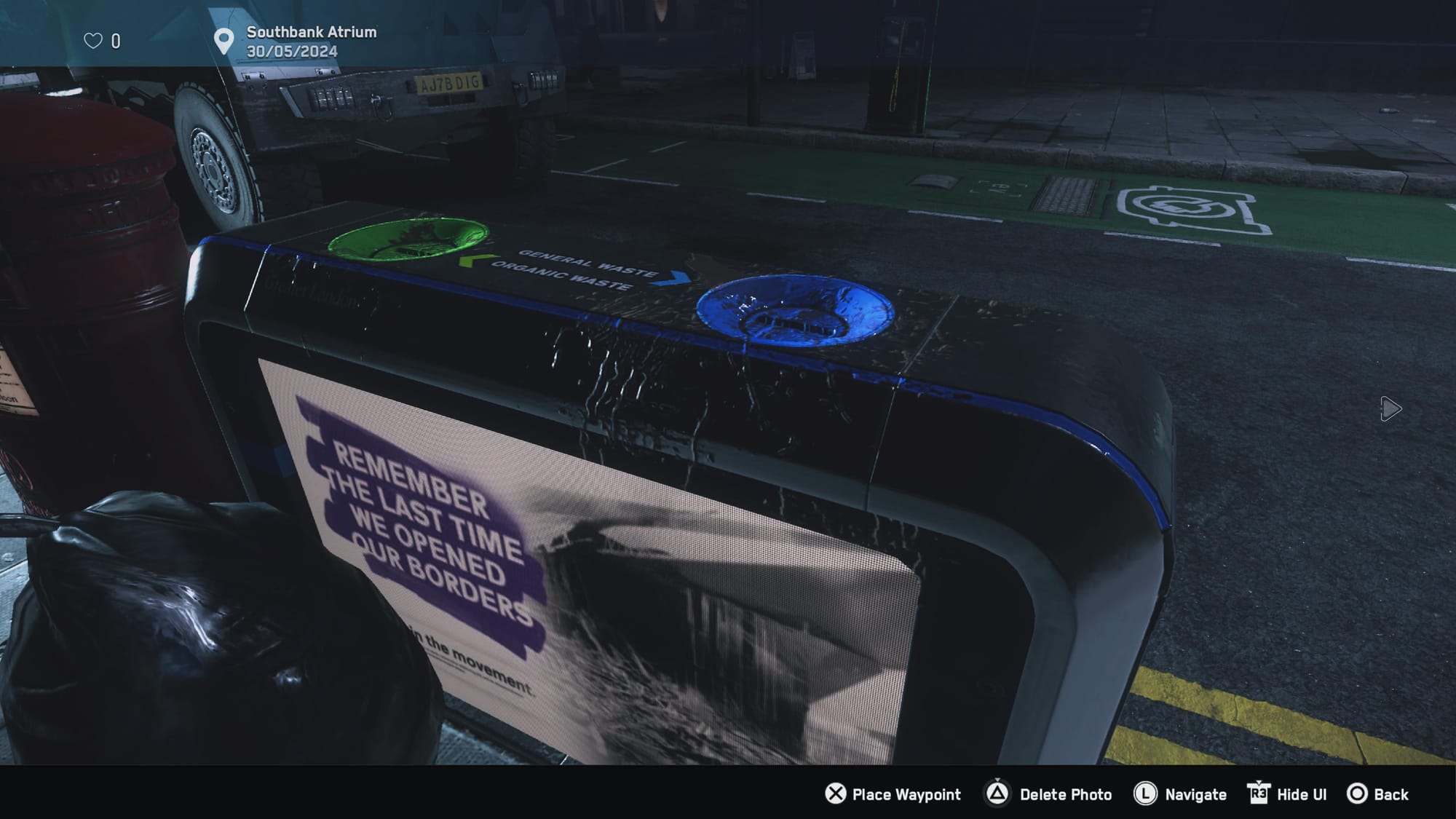
So what can we conclude about the progress of the sustainable transition in Watchdogs Legion? Is the UK on track to get to net zero by 2050 according to this one partial videogame vision of a climate future? It's difficult to say, since solar has never been a major part of UK's renewable mix – nuclear and wind (the dark blue and dark green in the graph below) are far more prominent sources. But there's not really anything to convincingly say that the pace of change has accelerated either.
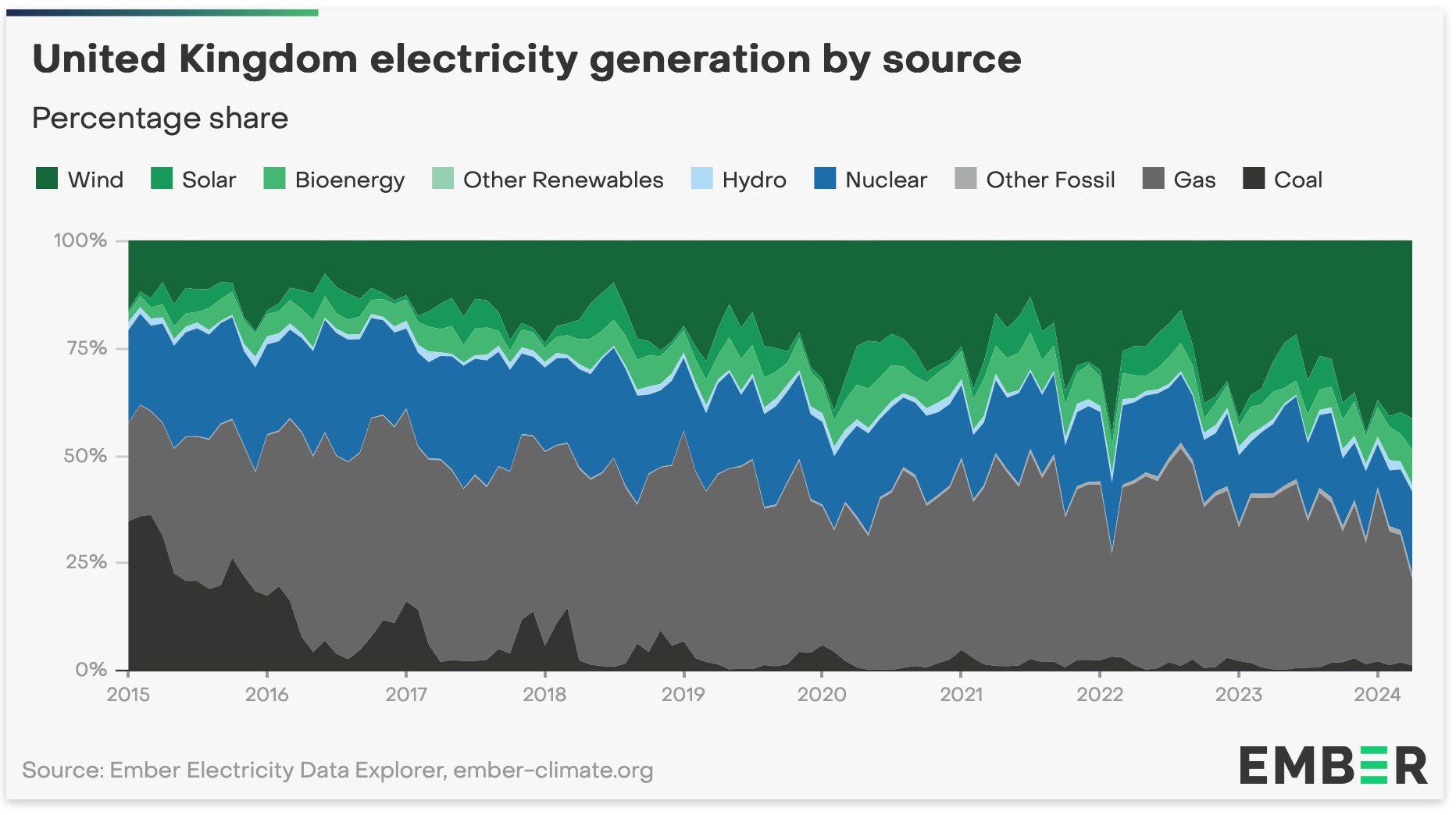
If Watchdogs Legion is only about 5-6 years away from the present, the transition is looking remarkably incomplete, itself perhaps a realistically disappointing extrapolation from our current halting, unevenly distributed, and endlesslessly contested sustainable transformation. But maybe it's an apt warning – tomorrow is determined by our decisions today, and there’s still time to make more ambitious changes that shift the needle.
Thanks for reading Greening the Games Industry. I hope you learned something fun about designs for rooftop solar systems – I’ve had a shocking cold for the past two days, and am drinking my body weight in orange juice. I’ve also been working like mad the past couple of weeks on a heap of exciting work that I hope I'll get to show you all in June, so fingers crossed for more exciting news soon.